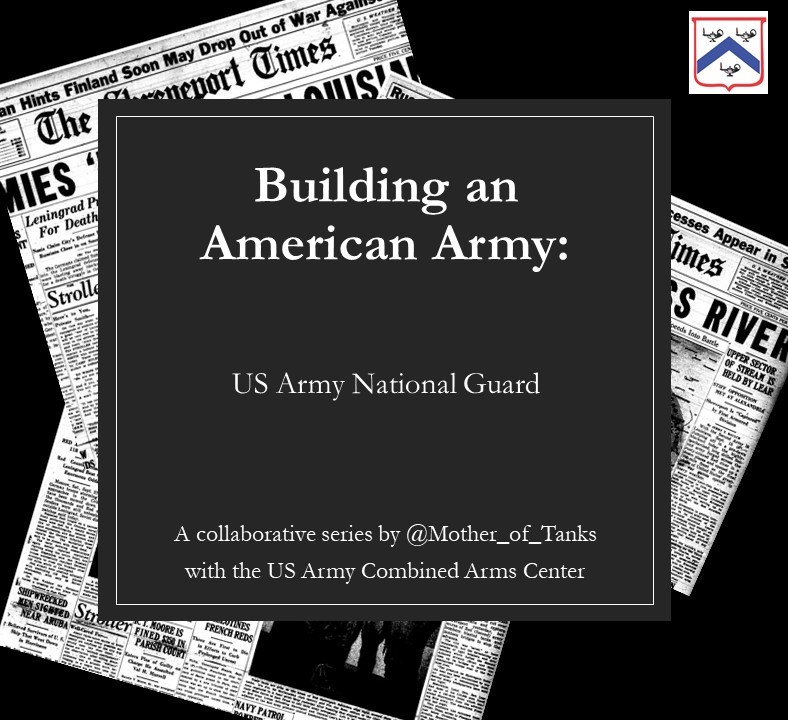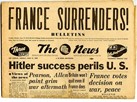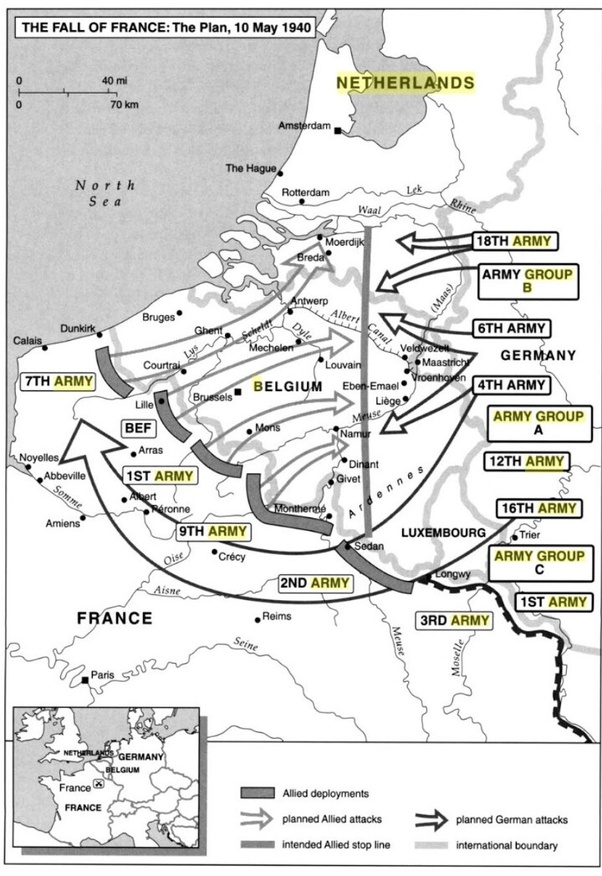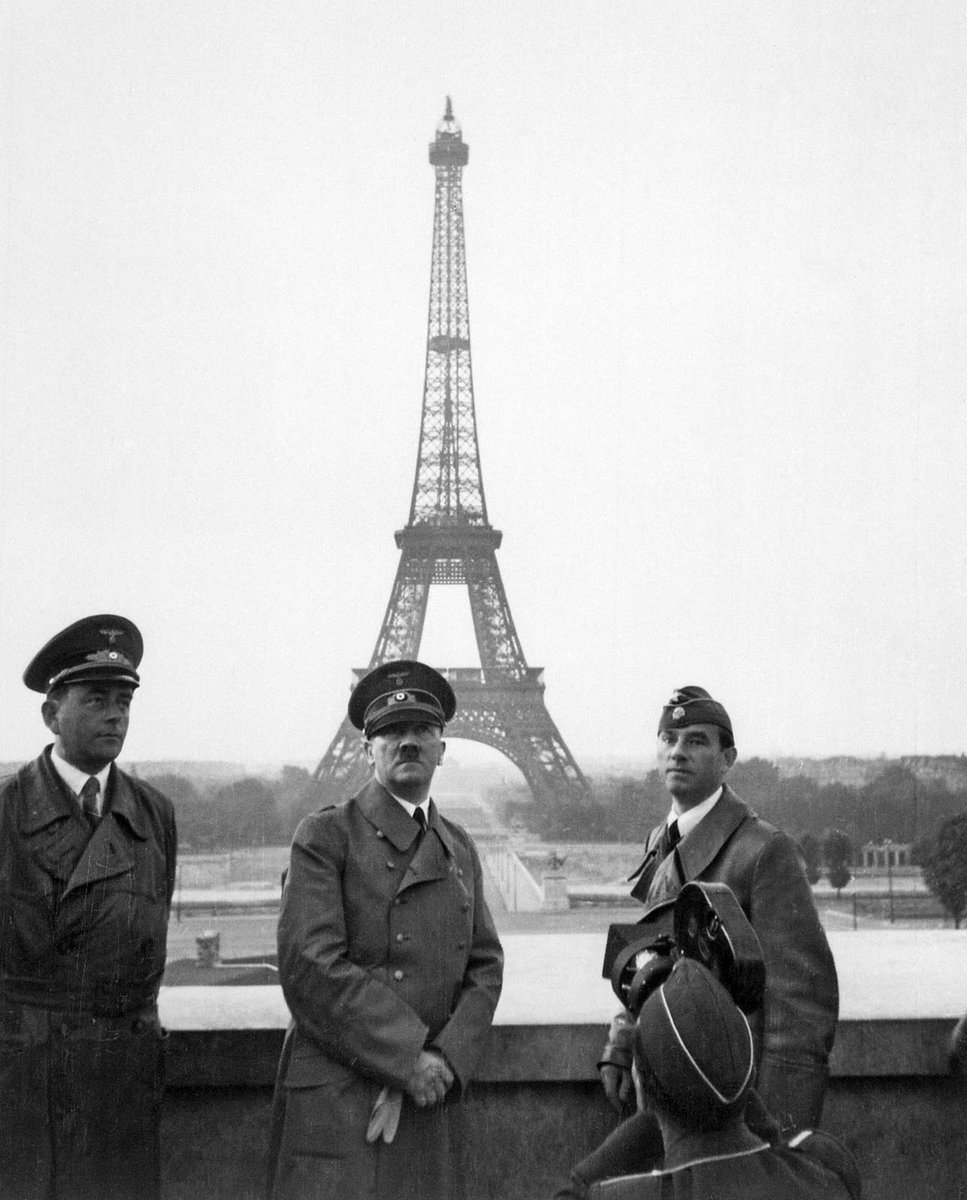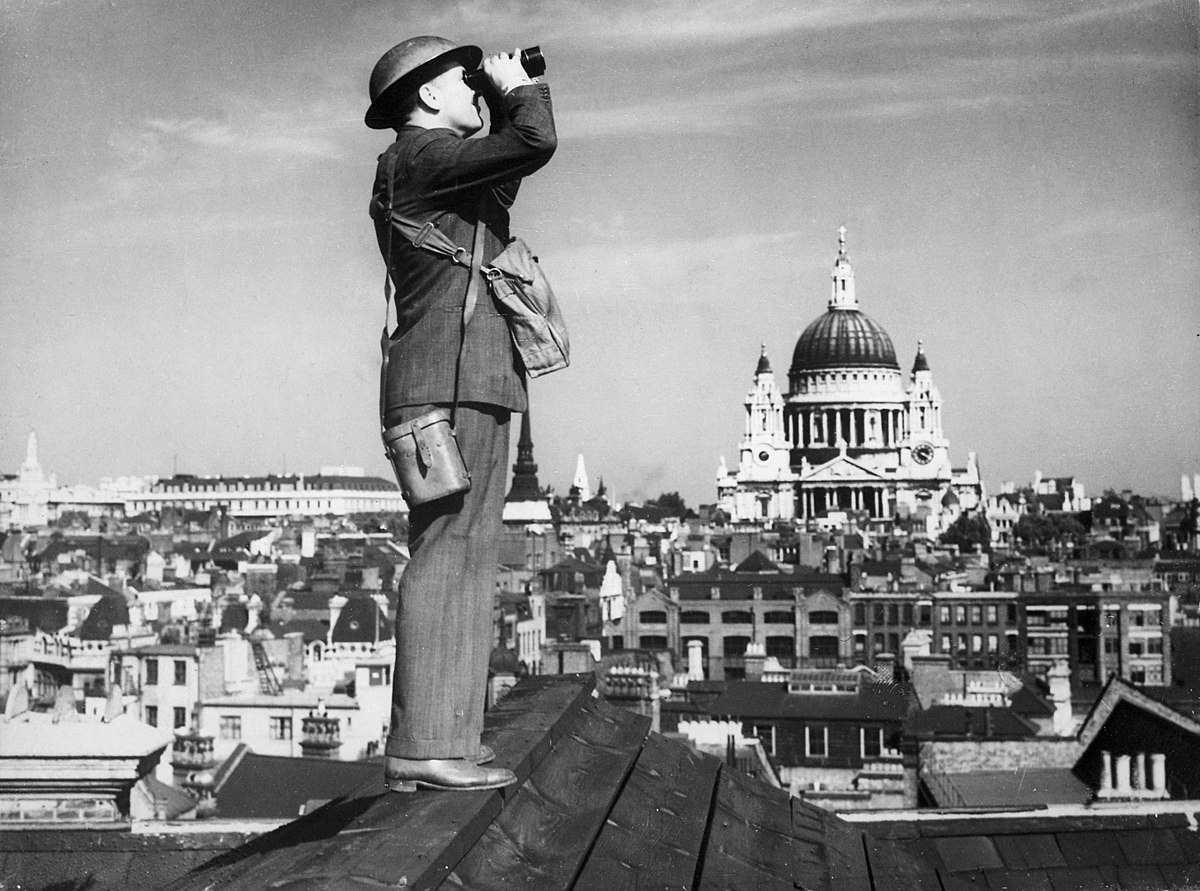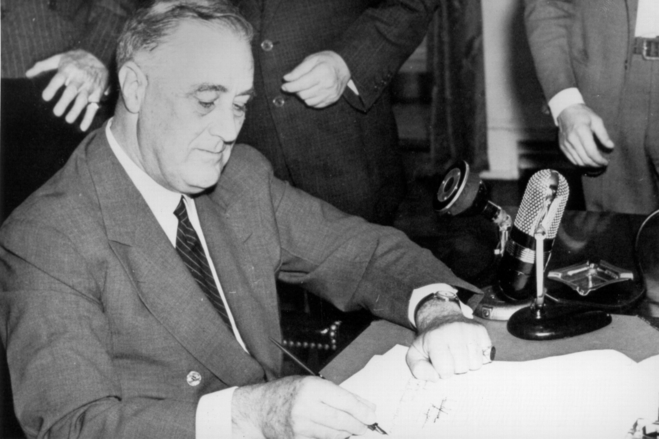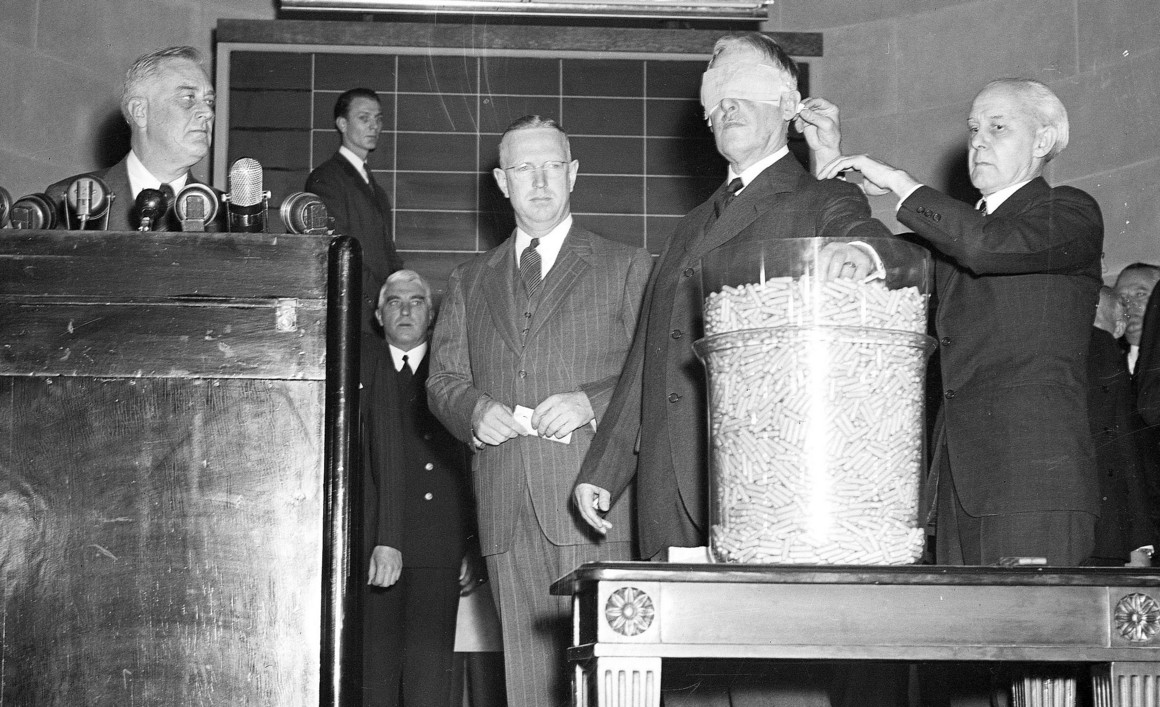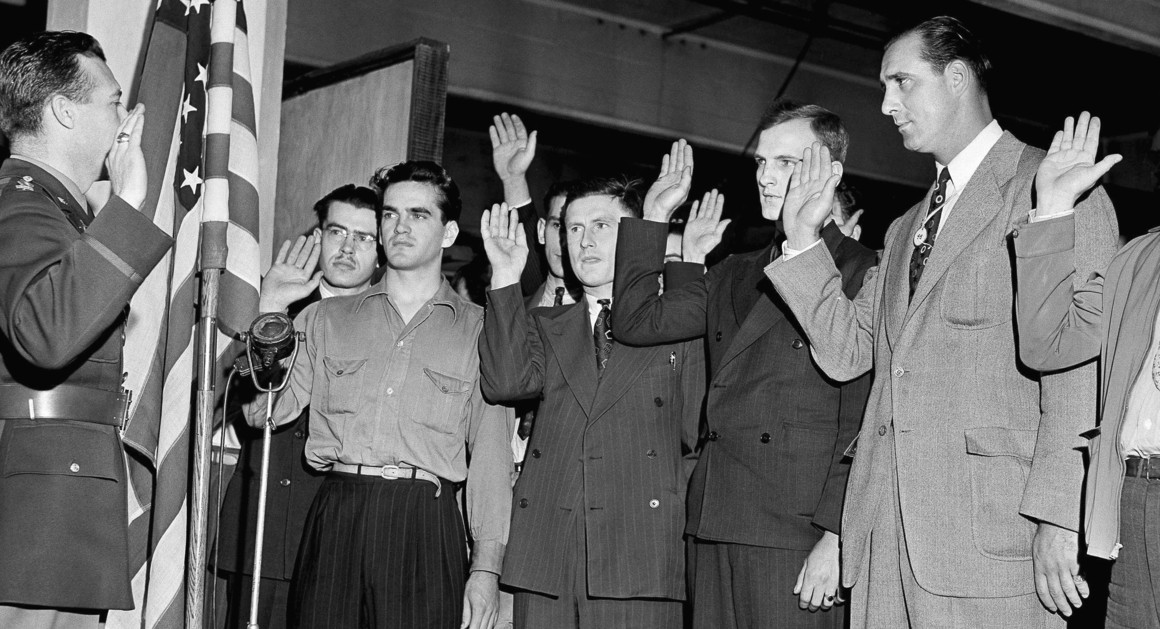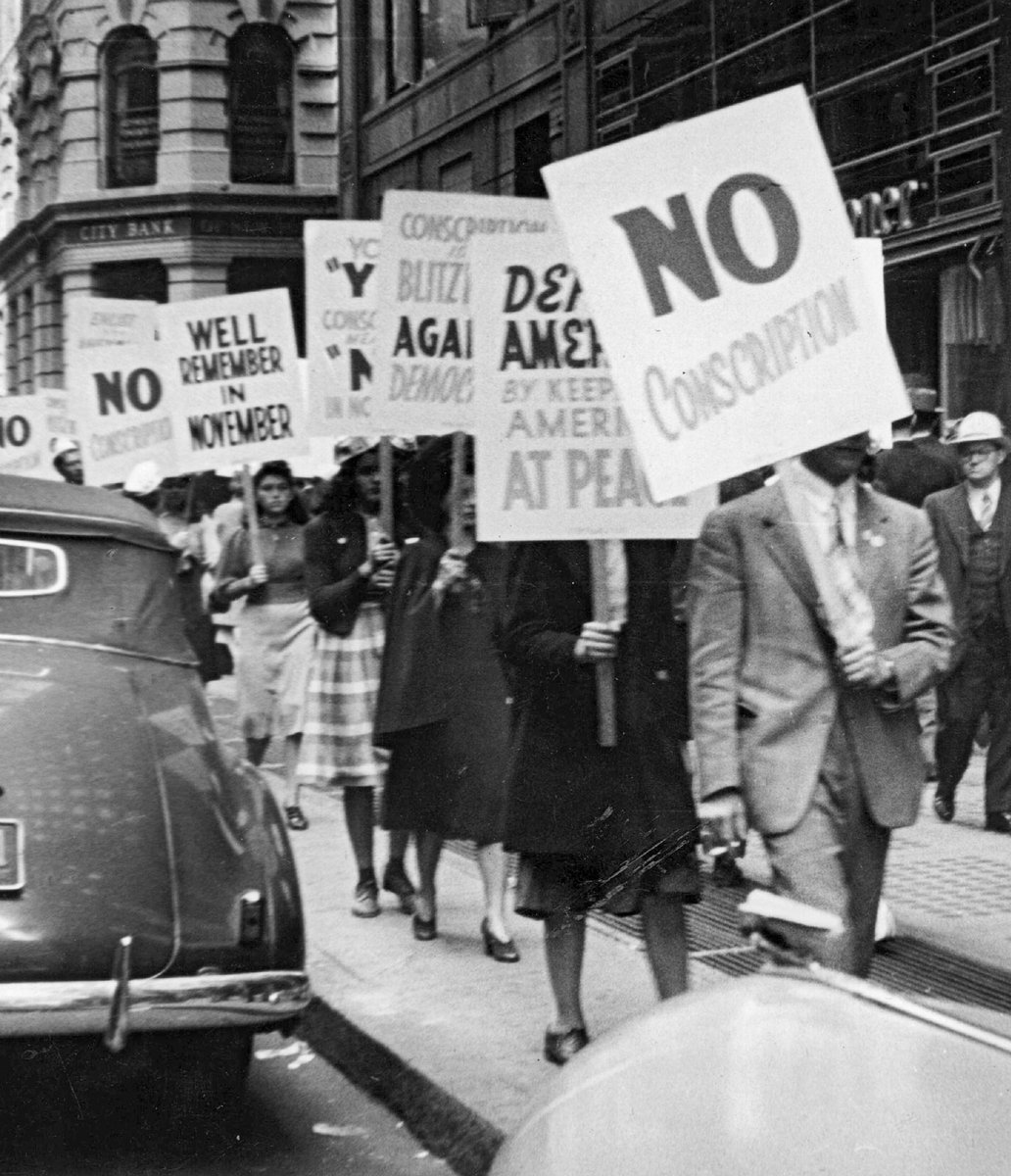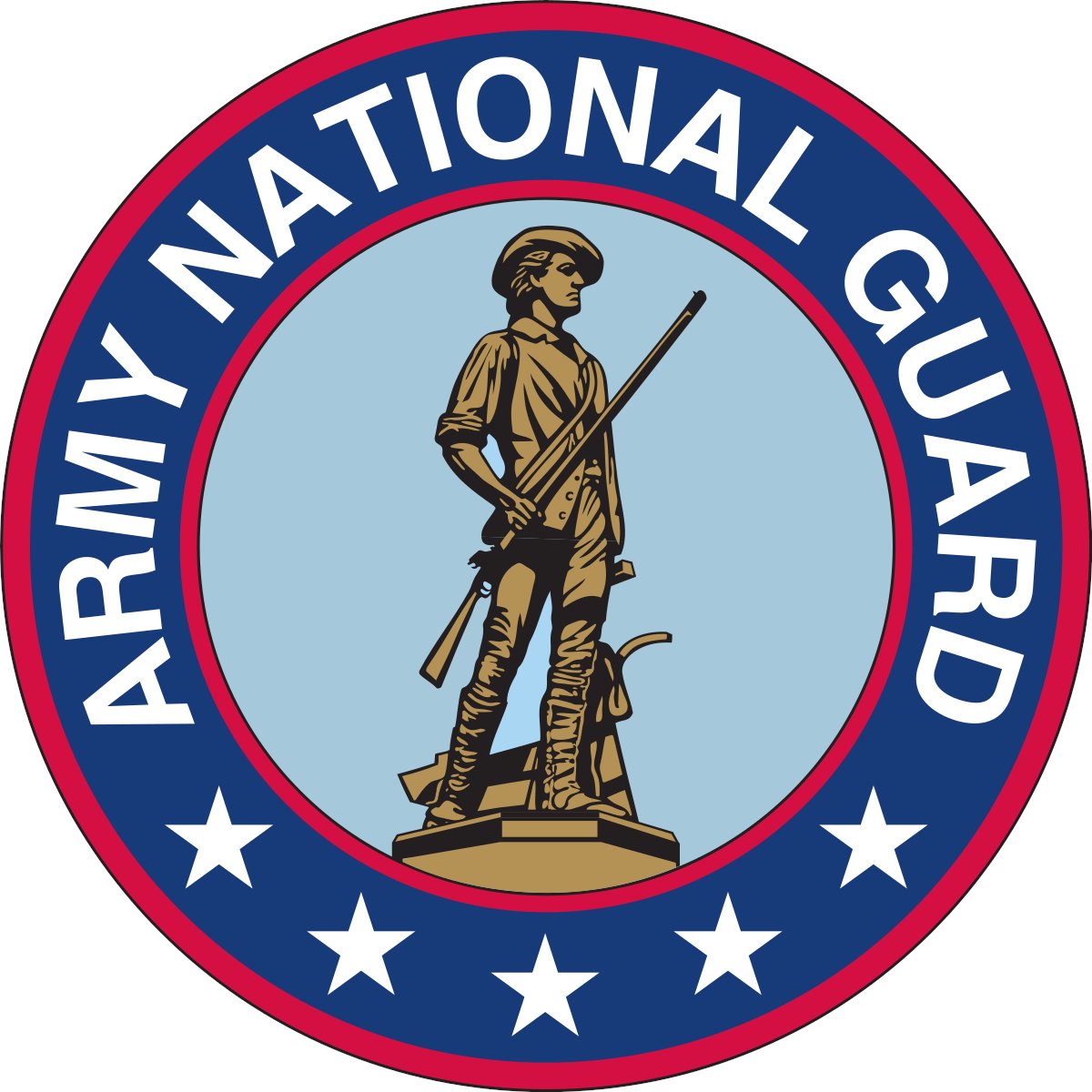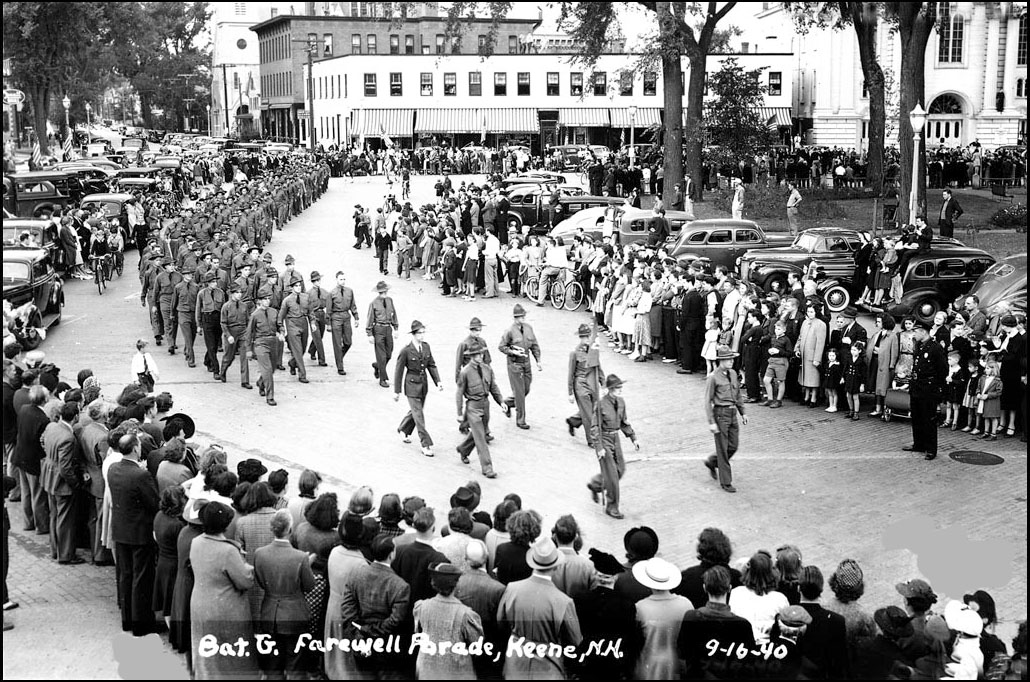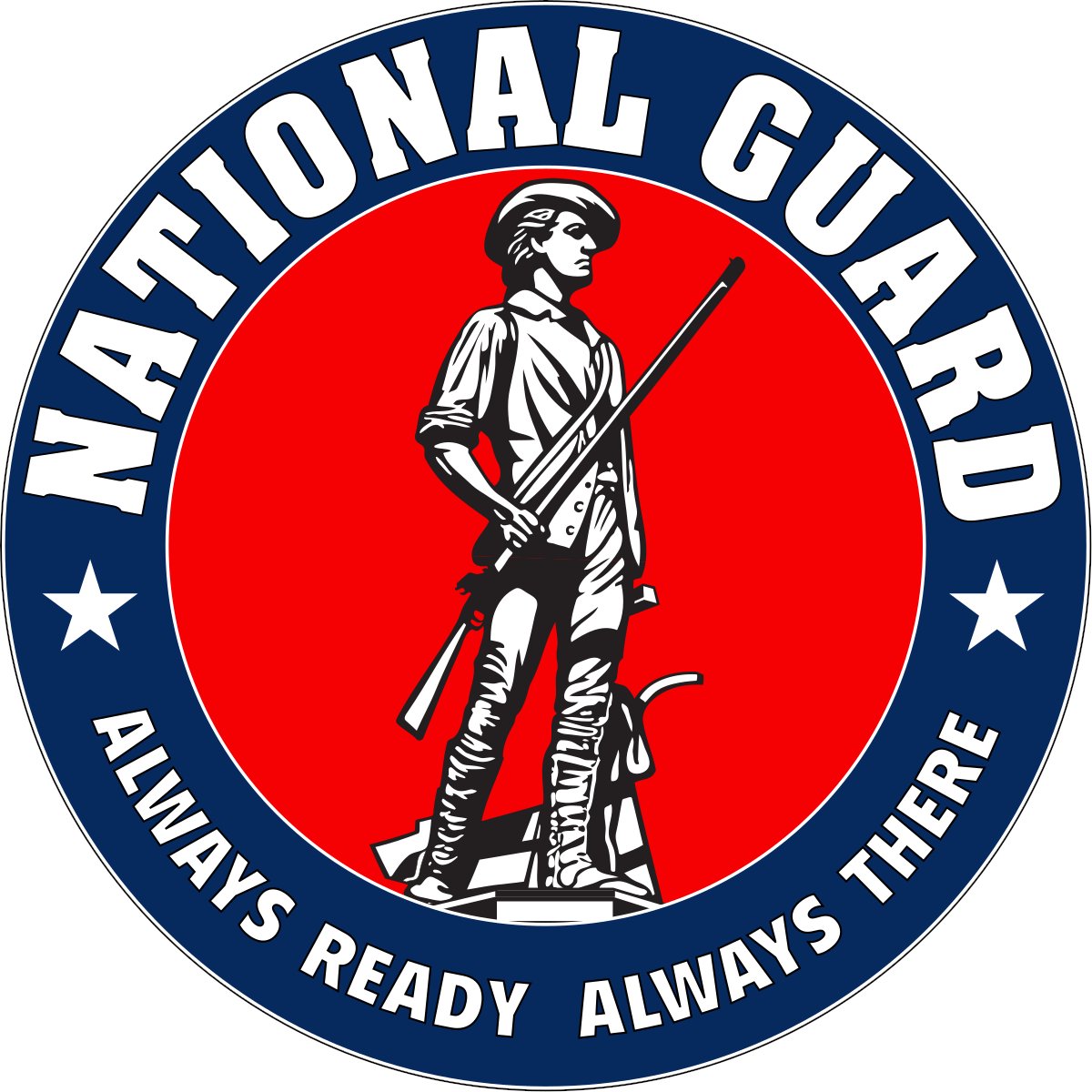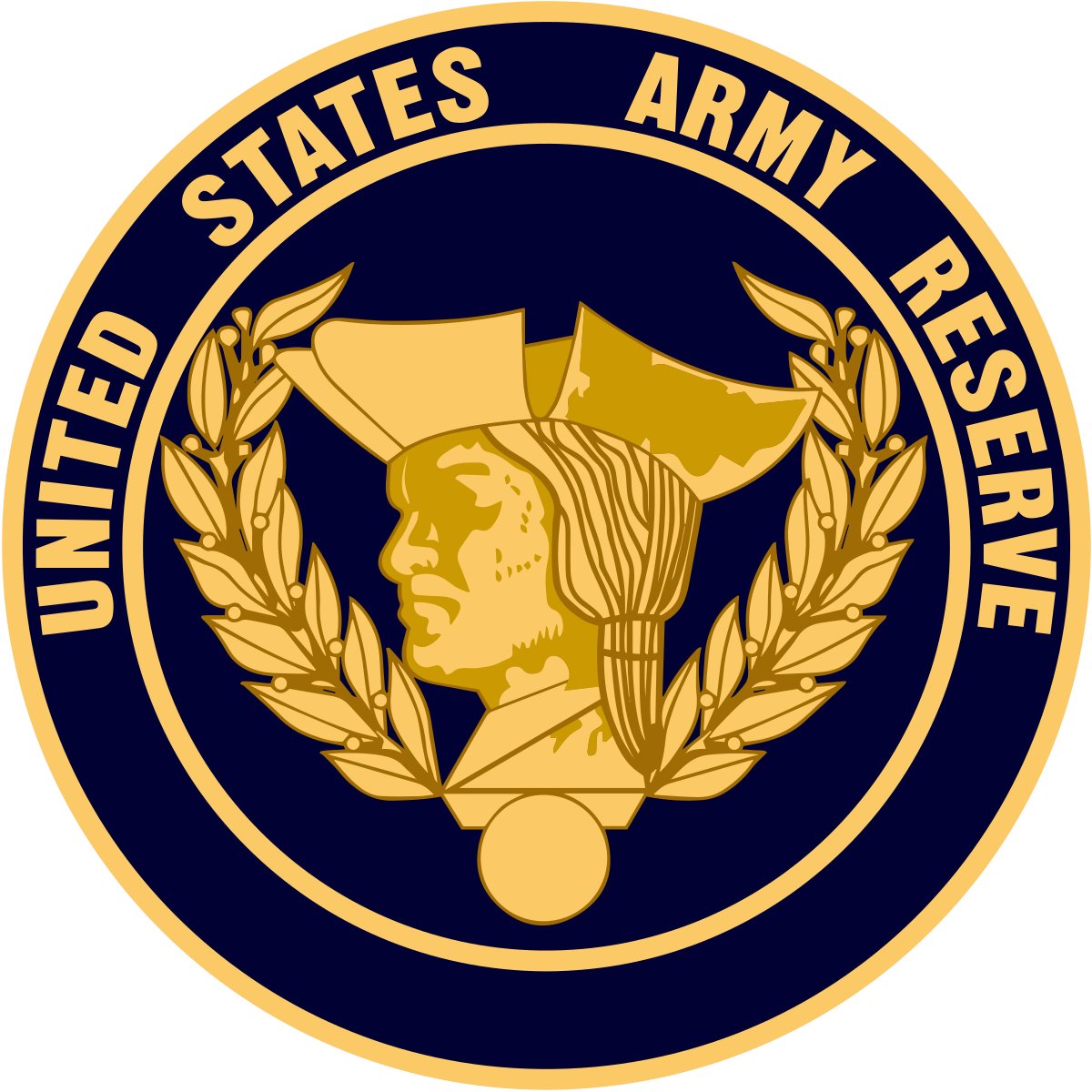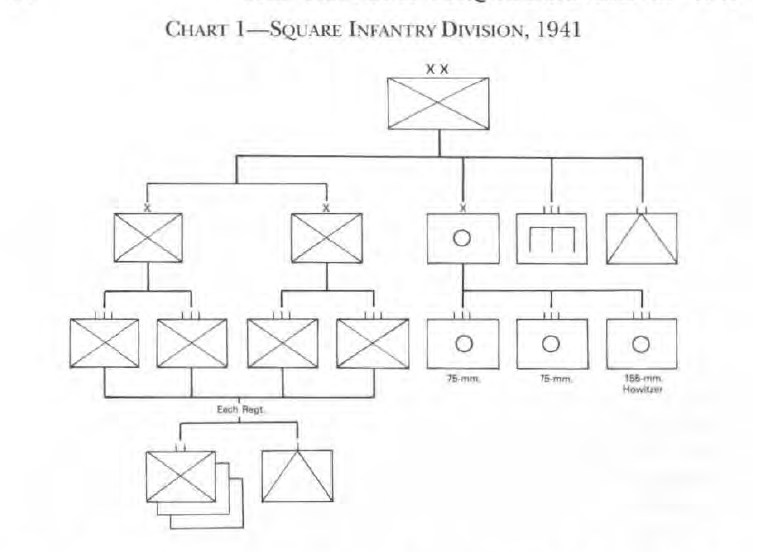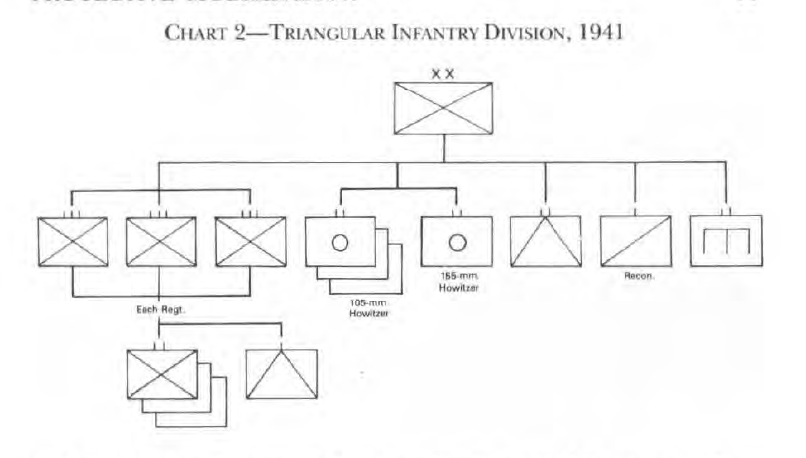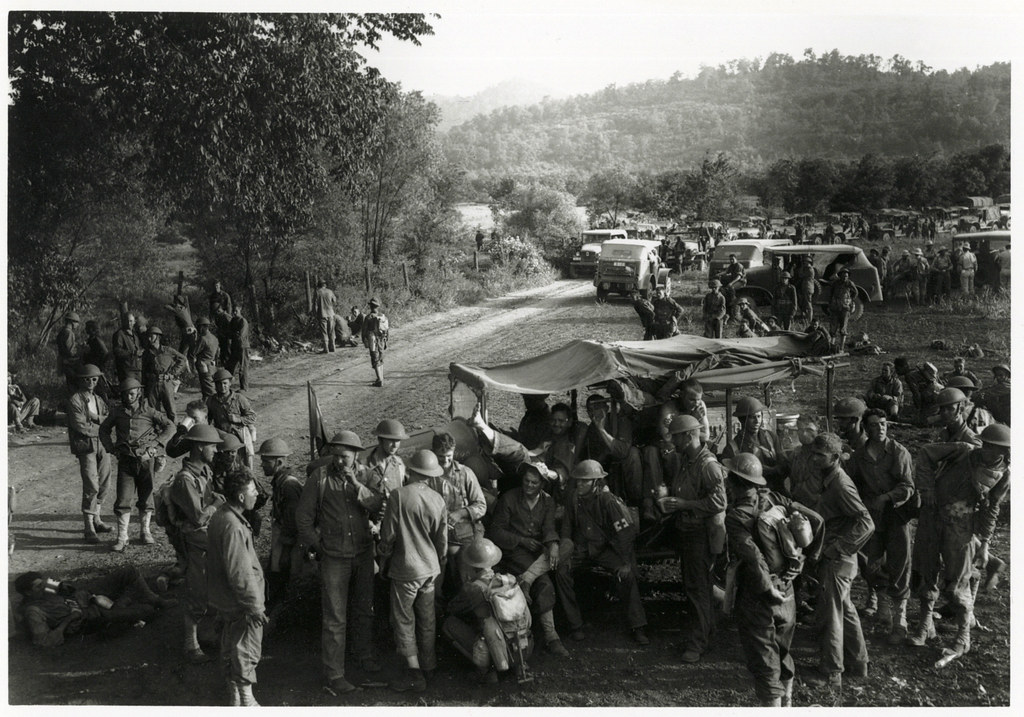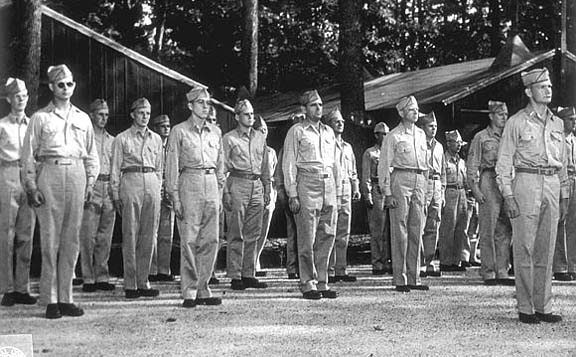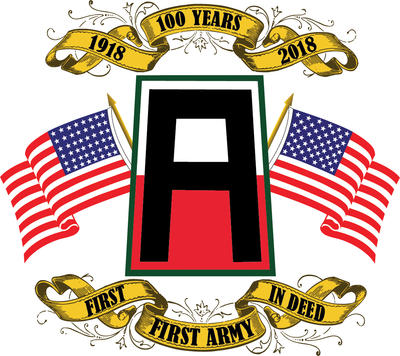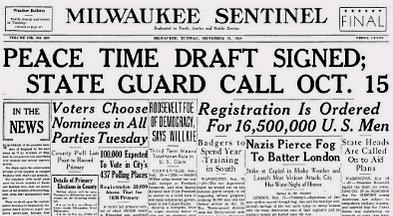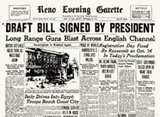When Germany defeated France in Spring of 1940 and engaged in an aerial assault on England that Summer, Congress pushed for the immediate expansion of the military but not with the Protective Mobilization Plan.
Congress wanted a draft.
Congress wanted a draft.
This would be the first peacetime draft in US history. The issue was debated for some time, but the Selective Service bill was introduced in mid-June 1940.
There were 18 undermanned divisions in the @USNationalGuard which could easily absorb thousands of draftees who would otherwise swamp the Regular @USArmy, most likely the Infantry divisions, or possibly undermine the ongoing modernization processes.
The Protective Mobilization Plan called for inducting Reserve and Army National Guard components to grow the force. GEN George C. Marshall pushed for this. Marshall was determined to bring the National Guard under federal control. @USArmyReserve @USNationalGuard @USArmy
He was assuming, somewhat optimistically, that those 200,000 soldiers had spent 60 nights a year in “armory drills” resulting in an adequate foundation of technical, theoretical, and basic training. https://abs.twimg.com/emoji/v2/... draggable="false" alt="👀" title="Augen" aria-label="Emoji: Augen"> @JamesGField @RPG_volley @pptsapper @jtp802 @MikeObach @MorrisKarlen
https://abs.twimg.com/emoji/v2/... draggable="false" alt="👀" title="Augen" aria-label="Emoji: Augen"> @JamesGField @RPG_volley @pptsapper @jtp802 @MikeObach @MorrisKarlen
The commanders of the 4 (on paper) field armies were ordered by the War Department to gather all of their Army National Guard units in their geographic areas and conduct massed unit training.
Each encampment would conclude the training with a corps vs corps maneuver, which would absolutely include field-worthy National Guard divisions… right guys? https://abs.twimg.com/emoji/v2/... draggable="false" alt="👀" title="Augen" aria-label="Emoji: Augen"> @JamesGField @RPG_volley @pptsapper @jtp802 @MikeObach @MorrisKarlen
https://abs.twimg.com/emoji/v2/... draggable="false" alt="👀" title="Augen" aria-label="Emoji: Augen"> @JamesGField @RPG_volley @pptsapper @jtp802 @MikeObach @MorrisKarlen
To be fair, the National Guard had been doing what it could, but without funds for new equipment and training, there was a serious need for expectation management.
So, the National Guard units reported as ordered in the beginning of August (1940) and engaged in 3 weeks of training programs, which had been written by their commanders and approved by the War Department.
The training included 5 days for platoon level training, 5 days for company level, and 5 days for battalion level. Two days for regimental level training, 2 days for brigade level, and 2 final days for division level.
(5 + 5 + 5 + 2 + 2 + 2 = 21 days https://abs.twimg.com/emoji/v2/... draggable="false" alt="✅" title="Fettes weißes Häkchen" aria-label="Emoji: Fettes weißes Häkchen">)
https://abs.twimg.com/emoji/v2/... draggable="false" alt="✅" title="Fettes weißes Häkchen" aria-label="Emoji: Fettes weißes Häkchen">)
(5 + 5 + 5 + 2 + 2 + 2 = 21 days
Whether they were ready or not, the divisions entered the corps level maneuvers as the final element of this training program. Anyone want to guess what happened?
“Although the corps-vs-corps maneuvers in each of the encampments varied in detail, they all revealed that the Army National Guard’s state of training was wholly inadequate.”
“Individual soldiers, physically unprepared for marching and living in the field, collapsed from exhaustion with alarming frequency.”
“Observers noted that enlisted men were poorly trained in basic discipline as well. Platoons, companies, and battalions wandered aimlessly through the exercises, demonstrating clearly that the few days devoted to small-unit training had been grossly insufficient.”
It wasn’t just the enlisted soldiers.
“Officers frequently failed to issue coherent orders and often disobeyed the orders they received. Brigade and division commanders proved generally inept at coordinating weapons and units under their control.” @USArmyMCCoE @USARMYMCTP
“Officers frequently failed to issue coherent orders and often disobeyed the orders they received. Brigade and division commanders proved generally inept at coordinating weapons and units under their control.” @USArmyMCCoE @USARMYMCTP
“Communications were usually in a state of collapse, and in some cases even the administration of supply broke down, leaving the National Guardsmen without food.”
To be clear, very few of these issues and deficiencies were the National Guard’s fault.
The War Department had failed to reorganize the National Guard divisions into triangular divisions, and wouldn’t actually do that until 1942.
Virtually all of the equipment and weapons they should have at this time (August 1940) were obsolete, scarce, or both. They reported to the encampments in August 1940 with obsolete WWI-era tents, webbing, boots, blankets, and other gear, all in varying stages of decay.
Their khaki uniforms were old and worn even before they began field training and exercises.
(This picture is just to show a summer khaki uniform)
(This picture is just to show a summer khaki uniform)
There were 147 news correspondents at First Army’s encampment alone and they paid particular attention to the equipment and supplies the Army National Guard did NOT have. @FirstArmy
https://www.first.army.mil/content.aspx?ContentID=200">https://www.first.army.mil/content.a...
https://www.first.army.mil/content.aspx?ContentID=200">https://www.first.army.mil/content.a...
We’re not talking canteens or helmets. There was genuine surprise to see trucks with signs painted on the sides reading “TANK” during the maneuvers, bolt-action Springfield rifles with signs that read “.50 CALIBRE”, and simulated antitank guns made from pieces of drainpipe.
The American public had been generally opposed to a draft (conscription) but this opposition was based on the assumption that the Army National Guard represented a presently combat-ready force.
The 1940 maneuvers were a tough realization for the country.
The 1940 maneuvers were a tough realization for the country.
There was no questioning, after the 1940 maneuvers, that the United States was almost completely defenseless. When the maneuvers ended on 27 August, Congress authorized the War Department to call up 300,000 National Guardsmen and Reservists for a year of federal service.
About 3 weeks later, Congress approved the Selective Service Act and the @USArmy was authorized to draft up to 900,000 men for a year of service.
“The National Guard’s make-believe guns spoke louder in Congress than they did on the maneuver field.”
As always, if you& #39;re just now tuning in or if you& #39;ve missed any of the previous threads, you can find them all saved on this account under  https://abs.twimg.com/emoji/v2/... draggable="false" alt="⚡️" title="Hochspannungszeichen" aria-label="Emoji: Hochspannungszeichen">Moments or with this direct link https://twitter.com/i/events/1364227580904181760?s=20">https://twitter.com/i/events/...
https://abs.twimg.com/emoji/v2/... draggable="false" alt="⚡️" title="Hochspannungszeichen" aria-label="Emoji: Hochspannungszeichen">Moments or with this direct link https://twitter.com/i/events/1364227580904181760?s=20">https://twitter.com/i/events/...

 Read on Twitter
Read on Twitter